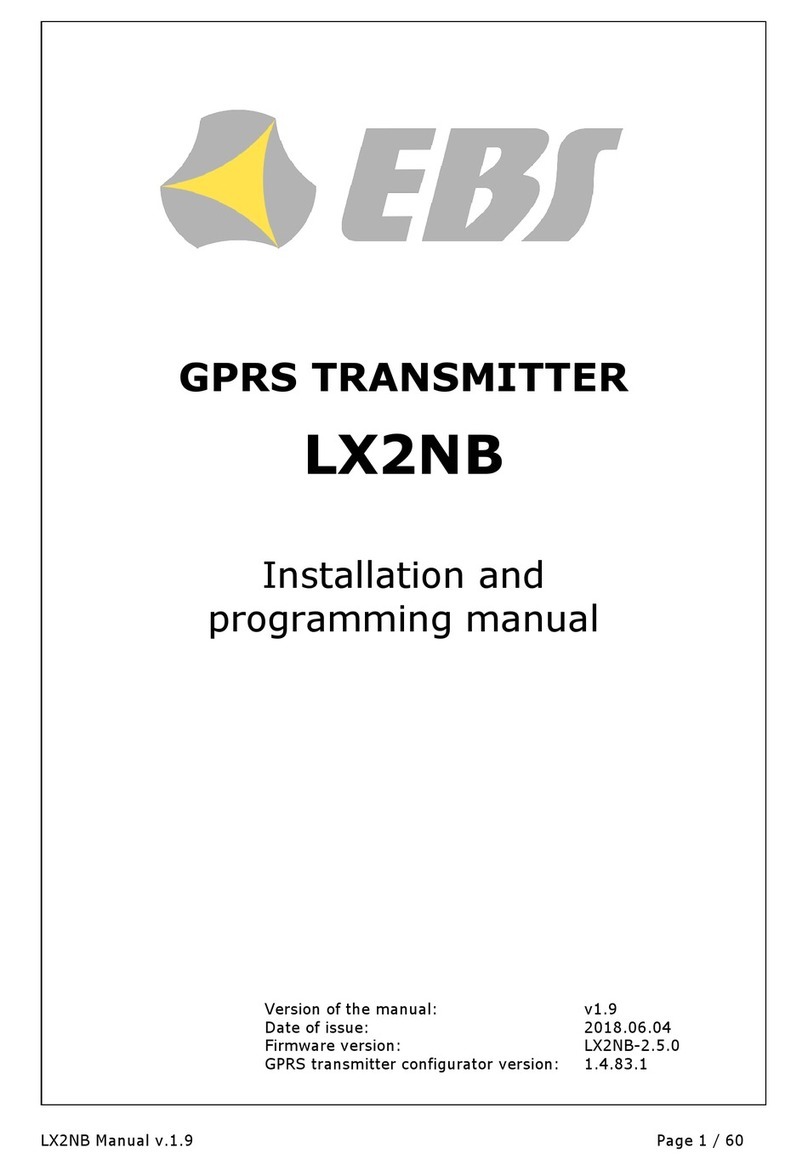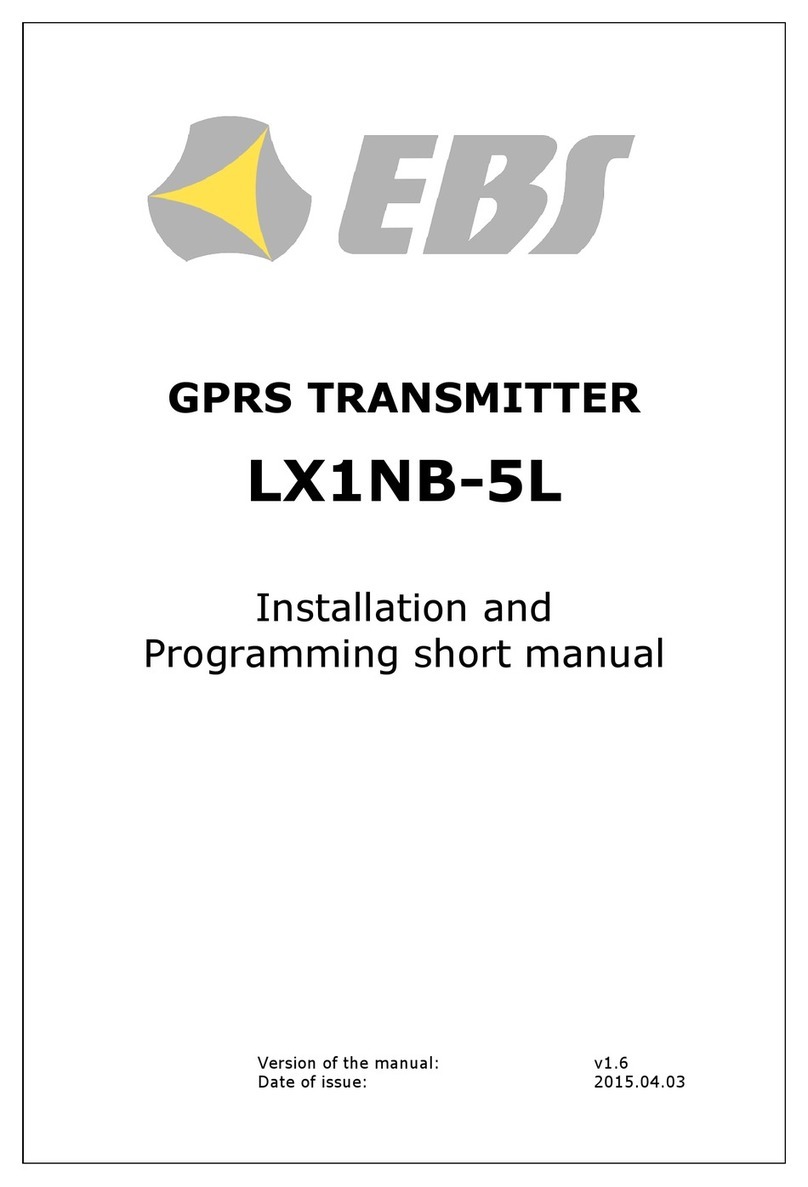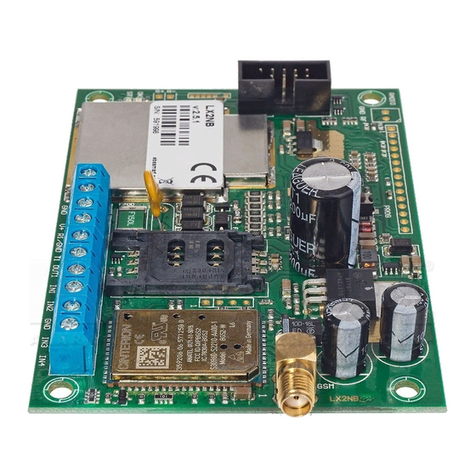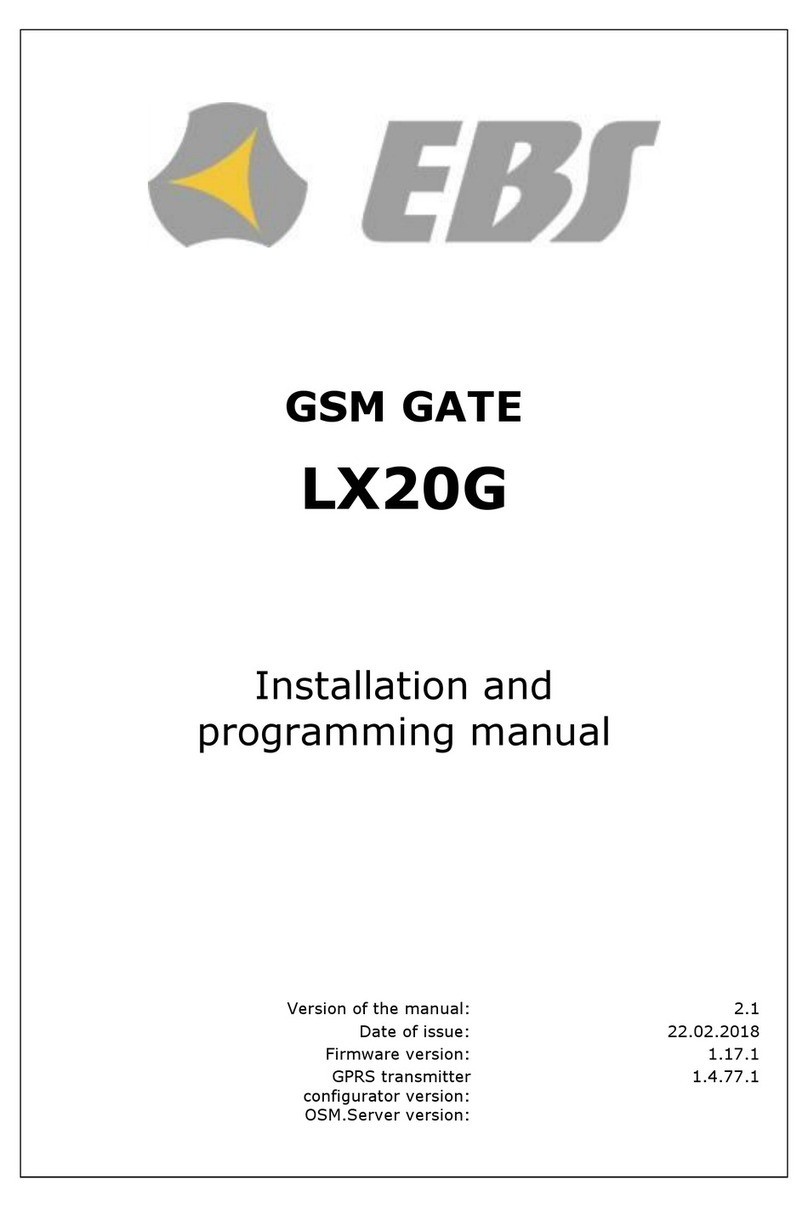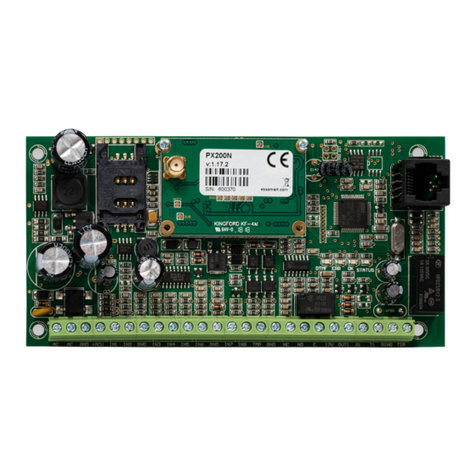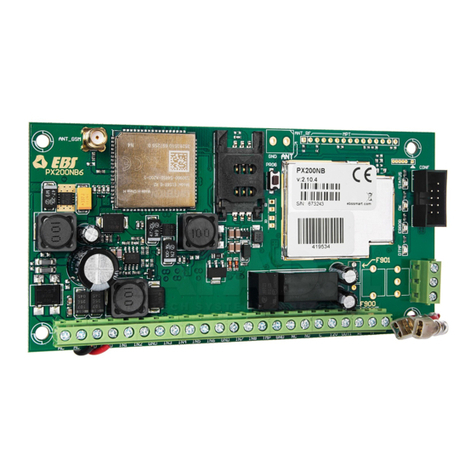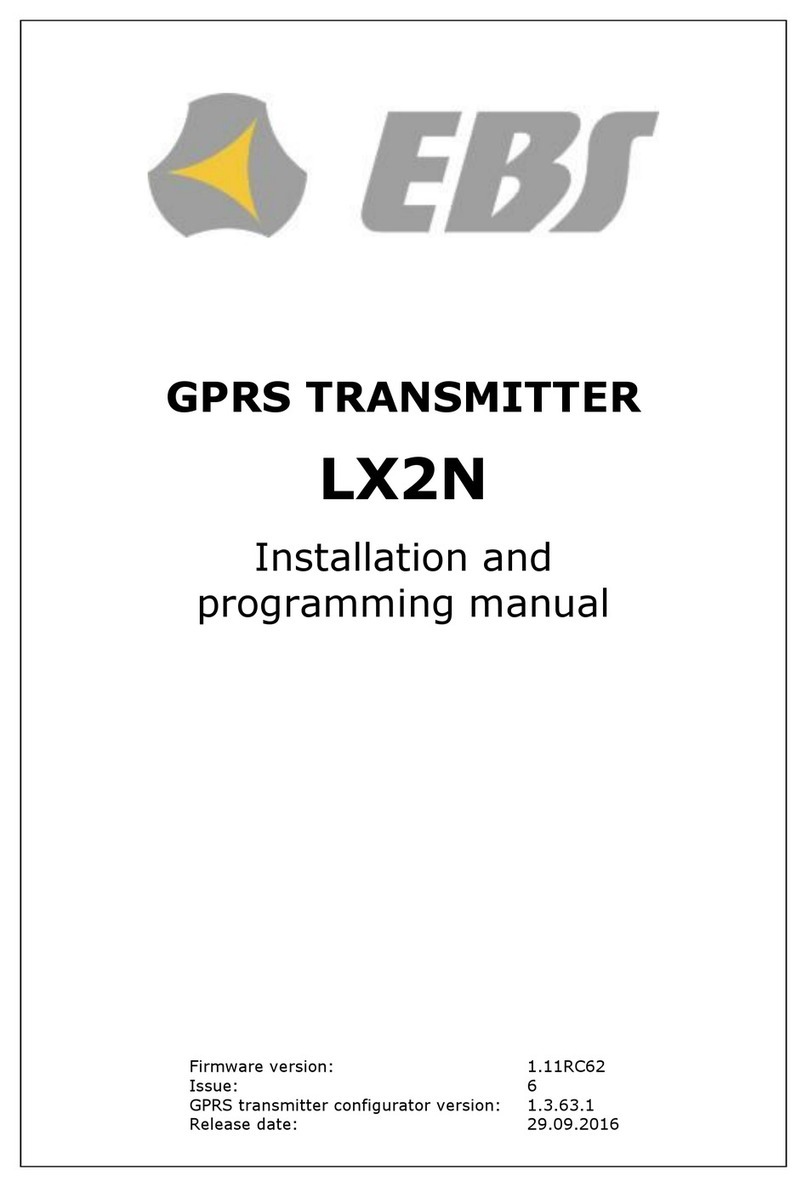
WX2NB Manual v.1.0 Page 3 / 40
TABLE OF CONTENTS
1. INTRODUCTION............................................................................................... 5
2. FUNCTIONAL AND TECHNICAL PARAMETERS ....................................................... 6
3. ASSEMBLY AND WIRING................................................................................... 7
3.1. WX2NB TRANSMITTER .............................................................................. 7
3.2. INPUT CONFIGURATION ............................................................................ 8
3.3. LX-ZAS POWER SUPPLY............................................................................. 9
4. OPERATION .................................................................................................. 10
5. CONFIGURATION PROGRAM ............................................................................ 11
5.1. INITIAL REMARKS .................................................................................. 11
5.2. COMPUTER –REQUIREMENTS .................................................................. 11
5.3. PROGRAM FUNCTIONS ............................................................................ 11
5.3.1. File->New ....................................................................................... 12
5.3.2. File->Open...................................................................................... 12
5.3.3. File->Save ...................................................................................... 12
5.3.4. File->Language ............................................................................... 12
5.3.5. File->Connections ............................................................................ 12
5.3.6. File->Automatic device settings backup .............................................. 14
5.3.7. File->Exit........................................................................................ 14
5.3.8. Operations->Read ........................................................................... 14
5.3.9. Operations->Send ........................................................................... 15
5.3.10. Operations->Restore default settings ................................................. 15
5.3.11. Operations->System events history ................................................... 16
5.3.12. Operations->Device monitor ............................................................. 16
5.3.13. Help->About program ...................................................................... 16
6. PROGRAMMABLE PARAMETERS........................................................................ 17
6.1. ACCESS................................................................................................. 17
6.1.1. Device mode ................................................................................... 18
6.1.2. Wi-Fi settings .................................................................................. 18
6.1.3. Network parameters......................................................................... 18
6.1.4. Data Transmission ........................................................................... 18
6.2. TRANSMISSION...................................................................................... 20
6.3. INPUTS/OUTPUTS ................................................................................... 21
6.3.1. Inputs configuration ......................................................................... 21
6.3.2. Partitions ........................................................................................ 24
6.3.3. Output configuration ........................................................................ 25
6.3.4. Advanced outputs control.................................................................. 26
6.4. MONITORING ......................................................................................... 28
6.4.1. Wi-Fi On / Wi-Fi Off.......................................................................... 28
6.4.2. Skip initial state............................................................................... 28
6.4.3. Power loss ...................................................................................... 29
6.4.4. Low DC power voltage ...................................................................... 29
6.5. LINK CONTROL....................................................................................... 29
6.5.1. Wi-Fi .............................................................................................. 29
6.6. PHONE LINE........................................................................................... 30
6.6.1. Phone line....................................................................................... 30
6.6.2. First and Second phone number ........................................................ 31
6.7. FIRMWARE ............................................................................................ 32
6.8. DEVICE MONITOR................................................................................... 34
6.9. EVENTS HISTORY ................................................................................... 34
7. DEVICE PROGRAMMING.................................................................................. 35
7.1. LOCAL PROGRAMING .............................................................................. 35
7.2. REMOTE PROGRAMMING ......................................................................... 35
7.2.1. The first programming of device ........................................................ 35
7.2.2. Reprogramming of device ................................................................. 36
8. RECEIVING OF MESSAGE................................................................................ 37
8.1. LX PROTOCOL ........................................................................................ 37
9. LED DIODES INDICATION ............................................................................... 38
